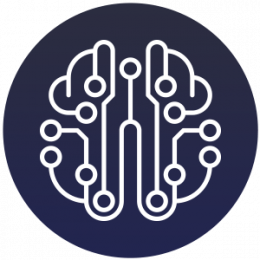
For years, marketers have been obsessed with conversion.
I get it.
It’s never been my favorite KPI – I much prefer the ones tied directly to bank accounts – but as a topic, Conversion gets a lot of attention, especially from consultants. Plus, it’s easy to calculate.
The challenge with conversion is that many conversion metrics depend entirely on traffic quality. I see so many people get frosty that their traffic is through the roof, but their overall conversion is down. They immediately point to offers, PDPs (Product Detail Pages), and all sorts of other things without looking at the fact that the increased traffic isn’t the same quality as the past bullseye traffic they are comparing it to. Bottom line: There are probably eleventy bazillion things you should do to fix your site, AND diminishing traffic quality might be an issue to look at as well.
One area of conversion measurement that’s clean, though, is Checkout. (Yes, quality issues still exist, but they’re easy to factor in.) One of the things that makes the BIGGEST difference? Implementing Artificial Intelligence/Machine Learning (AI/ML) into your cart/checkout.
Here are some of the most bang-for-your-buck areas to consider when you’re first starting out using AI/ML in your marketing efforts…
PERSONALIZING THE CHECKOUT EXPERIENCE
Over the years, many of the larger website platforms have designed a one-page checkout and said, “Hey, this is best practice; this is all you need to use.” And, for some companies, this works out just fine. But for most? Streamlining the experience – creating on-the-fly, dynamic carts and checkouts for each user as they work through your site – is, hands-down, the best choice you can make.
People are different. For every ten people, there are 30+ ways they’ll work your checkout. For example, a 70-year-old woman using her desktop computer, coming in from a catalog with a list of item numbers she’s interested in, who has never been on your site before is going to behave very differently from a 30-year-old female coming from TikTok on her phone, who orders from you 3x a year. And this is just a tame example. Things like which device the visitor is using; what channel they came in from; what their demographics are; which payment method they favor; how many visits they typically make to get an order; their OTC (open time of cart); and all sorts of other factors are critical in determining what someone’s personal cart/checkout experience should look like.
AI/ML allows you to take what you know about each user and their special snowflake way of doing things and use it to maximize their overall conversion and create happier, less frustrated user journeys. Best of all, it increases your revenues.
BESPOKE OFFERS
Still using one-size-fits-all offers? Consider using Artificial Intelligence to create dynamic offers based on the individual and/or their journey. Perhaps you already use different offers for different channels — 10% off on Facebook but Free Shipping on Google Shopping, for example. But what happens if the user doesn’t meet the order’s minimum AOV (Average Order Value) requirements?
Do you automagically adjust the qualifier(s) based on what you know about the user and their journey? You should.
What percentage of your users don’t need an offer at all? Do you still put a big COUPON CODE box in front of their face every time? You shouldn’t.
Which of your customers are the type that dumps a bunch of candy, magazines, and that simply must-have tube of Gorilla Glue in their carts while waiting to buy two lemons and a slab of salmon at the grocery store? Are they the same people who will add some “extras” in your cart/checkout? Do you know? You should.
Which folks are busy and/or especially prone to money-saving offers and will sign up for Automatic Delivery if you ask them? Who is motivated to purchase more when they see “you’re $7.38 away from FREE Shipping” messages? Who will buy if you show an Attaboy? (Attaboys = you made the right decision message.) Who responds best to loyalty program offers? Who will pull the trigger if they see the whole package (outfit, set-up, collection, etc.) along with their carted items? Who needs a friendly reminder of your money-back guarantee, speedy shipping, or something else? Which of your folks need to see the phone number? You should know all that too.
Poorly managed/optimized promo codes and shipping sections are two of the biggest reasons that people bail from your checkout. Figuring out how, when, where, what, and to whom you should use offers and promotions can be a game-changer in your business.
PERSONALIZED RECOMMENDATIONS
Many companies already have personalized recommendations in their cart and checkout. They’re often in the form of a carousel or a slammer along the bottom managed by ad service technology or a rudimentary “here’s what you looked at” duct-tape-and-spit in-house system, and THEY STILL WORK.
AI/ML allows you to put your personalized recommendations on steroids. Use it to figure out the best place for the personalized recommendations (by individual and/or by device); the best assortment; what each guest’s NBP (Next Best Product) is; where and how you can use Boosters (designed to increase the average order); and so on. (Incidentally, NBP is one of the most effective weapons in your arsenal. If you’re not looking at it, now is a good time to start.)
IMPROVED TESTING
Over the years, I’ve worked with clients who test maybe 1-3 things a year and others who run thousands of tests per hour (no joke.) Some of the tests were executed well. A lot of ‘em? Not. So. Much.
Using AI/ML throughout your testing efforts – in the cart, checkout, product detail pages, entry pages, internal search results, etc. – is one of the most valuable things you can do for your business.
Why? Dynamic testing powered by AI/ML offers you so much more than traditional A/B split testing. Dynamic Testing is faster (you don’t need to wait weeks/months for the results as you do with A/B); it’s more comprehensive (you can test a lot more things at once); it’s constructive (you build on the positives/strengths immediately), and it provides more actionable insights.
There are many things that you can test in your cart/checkout. When you’re starting out, it’s good to get your feet wet with more straightforward tests like copy, design, layout, and progress indicators/temperature bars. As you get more sophisticated, you’ll want to look at form construction (specifically steps and space), what visuals/language you use to sell/describe the carted products, personalization, upsells/cross-sells, shipping, offers/promotions, segmentation, intent feedback, and so on.
CREATING THE MOST EFFECTIVE SKIP-THE-LINE EXPERIENCES FOR ABANDONERS
Most companies don’t convert as many abandoned carts as they could/should. Why? Two reasons. First, they don’t keep carts long enough. (Deleting users’ carts after x days absolutely slays me.) Second, they drive the user (usually via email or retargeting ads) right back to the same place they had the problem the first time.
Using AI/ML solves both issues. Problem #1 basically solves itself because as you fall more and more in love with your data, you won’t want to let any of it go, and you’ll find more effective ways to use it. (Sounds cheesy, but it happens to almost everyone implementing marketing AI.) Problem #2 typically gets fixed because you can figure out precisely where the best place to return the user is and dump them there.
AI/ML is spectacular at putting the user in the exact place where they’re most likely to complete their order and/or automatically analyzing their journey and reorganizing the process. This is especially beneficial for Voice and Mobile customers, where the seemingly endless distractions in real life directly impact the conversion process on their devices.
Have questions about using Artificial Intelligence to improve your cart and checkout conversion? Have a tip you’d like to share? Tweet @amyafrica or write info@eightbyeight.com.


 Catalogers and other offline marketers have many advantages when it comes to E-Commerce.
Catalogers and other offline marketers have many advantages when it comes to E-Commerce. 

